 |
 |
 |
| |
Uptake and discontinuation of Integrase Inhibitors (INSTIs) in a large cohort setting (DTG, EVG, RAL)
DTG Easily Most Popular INI Across Europe, With Lowest Quitting Rate
|
| |
| |
17th European AIDS Conference, November 6-9, 2019, Basel
Mark Mascolini
In the European-Australian RESPOND cohort, uptake of dolutegravir (DTG) easily outpaced uptake of elvitegravir (EVG) and raltegravir (RAL) [1]. And people starting EVG or RAL proved more likely to stop than people who started DTG. Toxicity was the main reason for stopping EVG or DTG, while regimen simplification explained most RAL discontinuations.
INIs have emerged as popular first-line antiretrovirals because of their relative potency and safety. But reasons for starting or stopping INIs in the clinic remain poorly understood. To address those questions, RESPOND cohort researchers analyzed INI uptake and discontinuation in this collaboration of 17 observational cohorts across Europe and Australia, which includes more than 28,000 people with HIV infection.
The analysis focused on people who started DTG, EVG/cobicistat, or RAL for the first time after the date they entered their local cohort or after January 1, 2012, whichever came later. Everyone was at least 16 years old and had their CD4 count and viral load measured within 6 months before or after starting their INI.
The RESPOND team used multinomial logistic regression to explore associations between baseline characteristics and likelihood of starting RAL versus DTG or EVG versus DTG. They used Cox proportional hazards models to identify factors linked to stopping an INI within the first 6 months.
The analysis included 5051 people (52%) starting DTG, 2718 (28%) starting RAL, and 1933 starting EVG (20%). About three quarters of all three groups were men and about 80% white. Median ages of the DTG, RAL, and EVG groups were 48, 48, and 45, median CD4 counts 578, 507, and 560, and proportions with a prior or current comorbidity 37.6%, 33.1%, and 27.7%. About two thirds of each group had antiretroviral experience and a viral load below 400 copies. But lower proportions in the DTG group (23.5%) and the RAL group (20.5%) than the EVG group (30.4%) had no antiretroviral experience when starting their INI.
Logistic regression identified seven independent predictors of starting RAL versus DTG: every additional 10 years of age, living in Southern or Eastern Europe versus Western Europe, being antiretroviral naive versus experienced, being experienced with a viral load above versus below 400 copies, having HCV infection, and having prior AIDS. Every later year starting an INI was independently associated with a lower chance of starting RAL than DTG.
A similar comparison of factors linked to starting EVG versus DTG identified 7 independent predictors of a lower chance of starting EVG: every later year starting an INI, every additional 10 years of age, being female versus male, living in Northern Europe or Australia versus Western Europe, and having HCV infection, prior AIDS, or a prior non-AIDS malignancy. Five factors independently predicted starting EVG rather than DTG: Living in Southern or Eastern Europe versus Western Europe, and having a CD4 count of 200-350, 350-500, or 500+ versus under 200 when starting the INI.
Through median follow-ups of 17.1 months with DTG, 33.4 months with RAL, and 17.7 months with EVG, respective proportions who stopped their INI were 12.3%, 42.1%, and 17.6%. Kaplan-Meier estimates of proportions who stopped their INI in the first 6 months were 14% for RAL, 7.4% for EVG, and 6.4% for DTG. Kaplan-Meier estimates of stopping at 18 months were 31.1% for RAL, 17.6% for EVG, and 12.8% for DTG.
Toxicity was the main driver of stopping DTG or EVG within the first 6 months, while patient or physician choice accounted for a growing proportion of discontinuations after that. The main reasons for stopping RAL either before or after 6 months were treatment simplification or patient or physician choice. Although DTG had the lowest overall discontinuation rate, stopping because of nervous system toxicity was more frequent with DTG than with EVG or RAL.
A Cox proportional hazards model identified several independent predictors of stopping an INI within 6 months at the following adjusted hazard ratios (aHR) and 95% confidence intervals (CI):
-- RAL vs DTG: aHR 3.03, 95% CI 2.47 to 3.71
-- EVG vs DTG: aHR 1.37, 95% CI 1.10 to 1.70
-- Every later year starting an INI: aHR 1.11, 95% CI 1.04 to 1.18
-- Female vs male: aHR 1.28, 95% CI 1.06 to 1.56
-- Antiretroviral experienced and viral load above vs below 400: aHR 1.36, 95% CI 1.07 to 1.73
-- HCV: aHR 1.32, 95% CI 1.06 to 1.66
-- Prior non-AIDS malignancy: aHR 1.55, 95% CI 1.13 to 2.12
Only two variables predicted lower chances of stopping an INI within 6 months: living in Southern or Eastern Europe versus Western Europe.
Reference
1. Greenberg L, Ryom L, Wandeler G, et al. Uptake and discontinuation of Integrase Inhibitors (INSTIs) in a large cohort setting. 17th European AIDS Conference, November 6-9, 2019, Basel. Abstract 8/7.
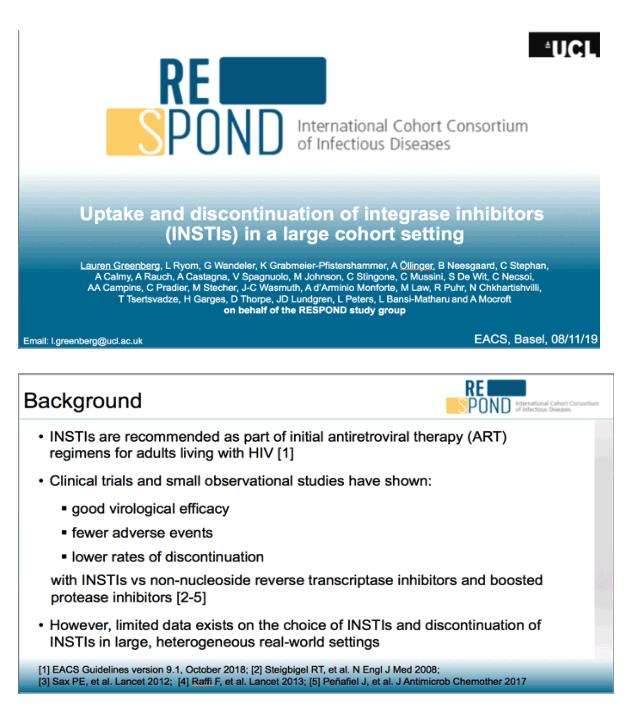
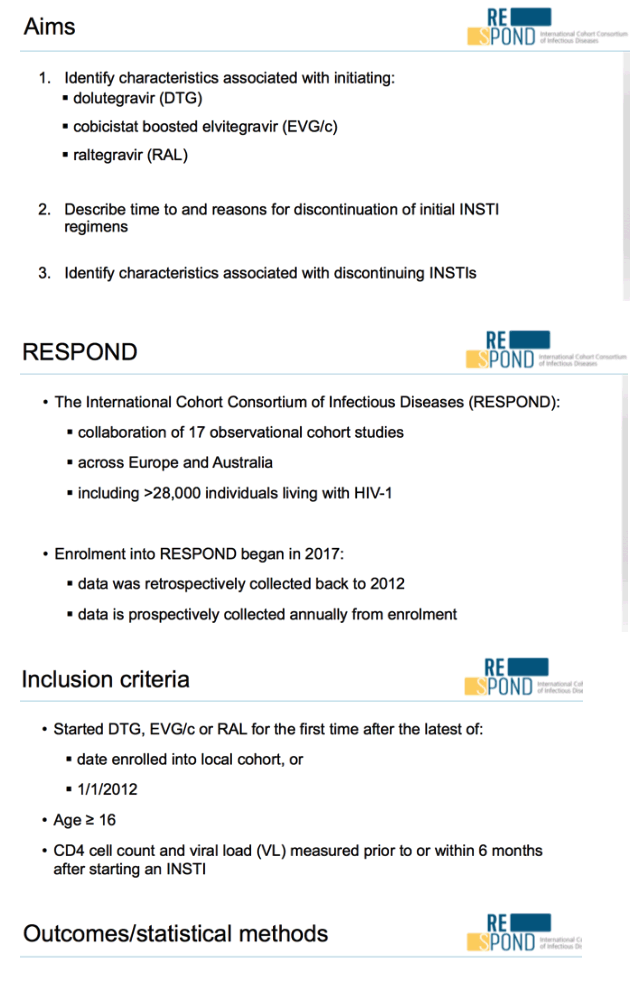
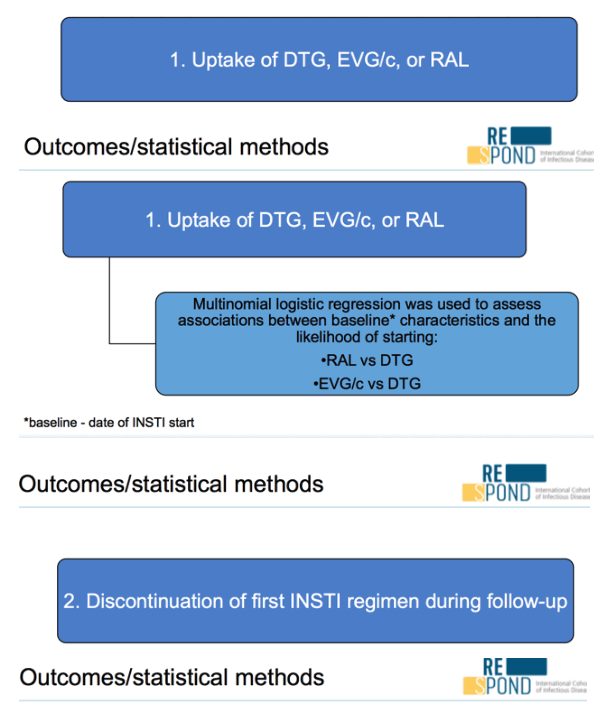
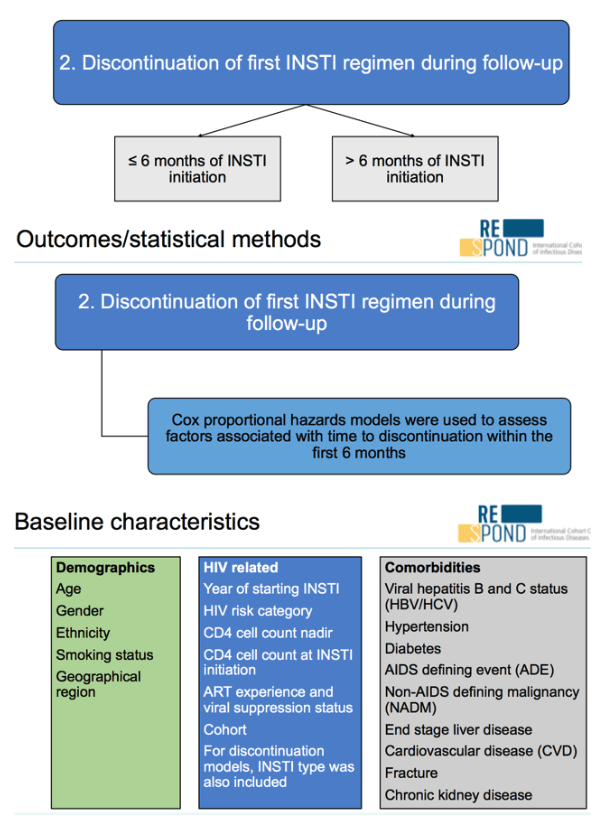

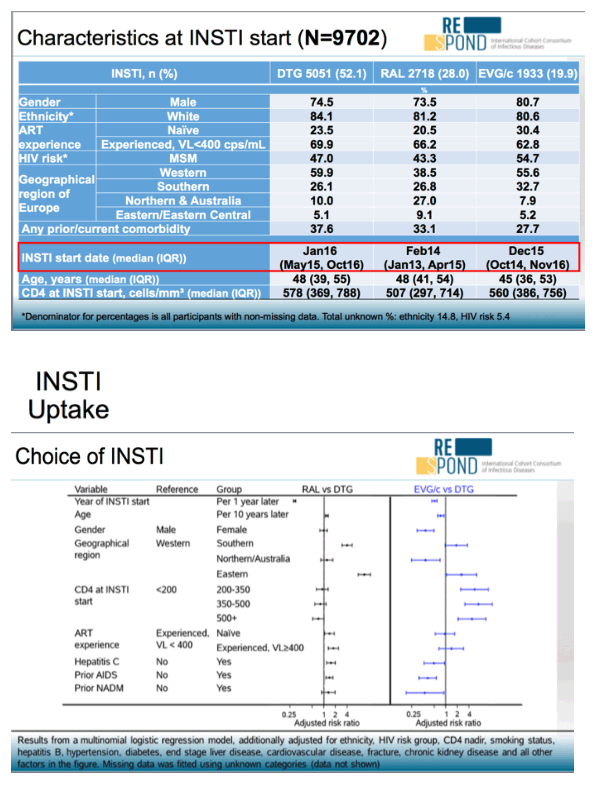
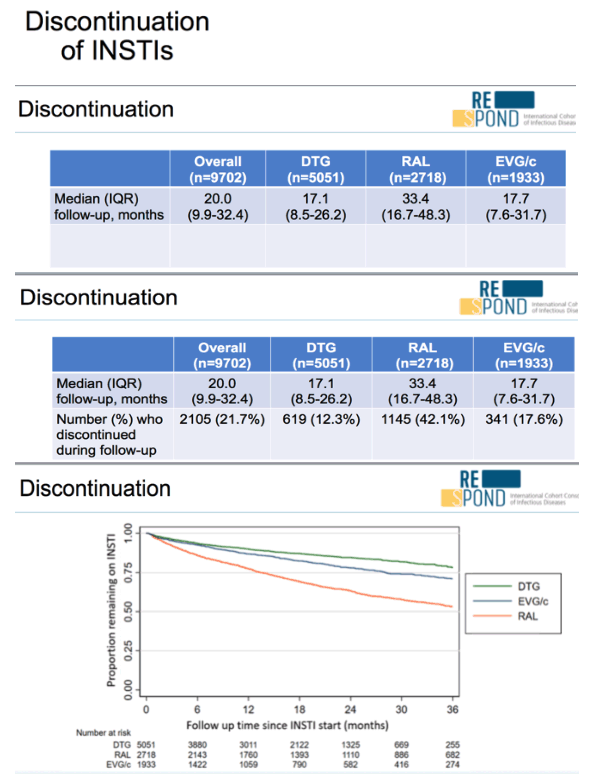
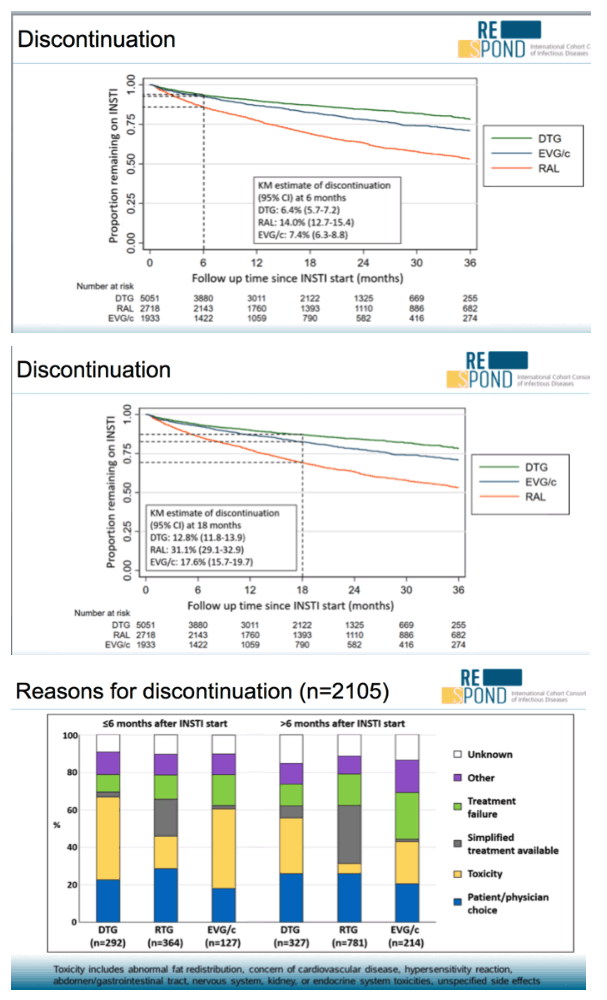
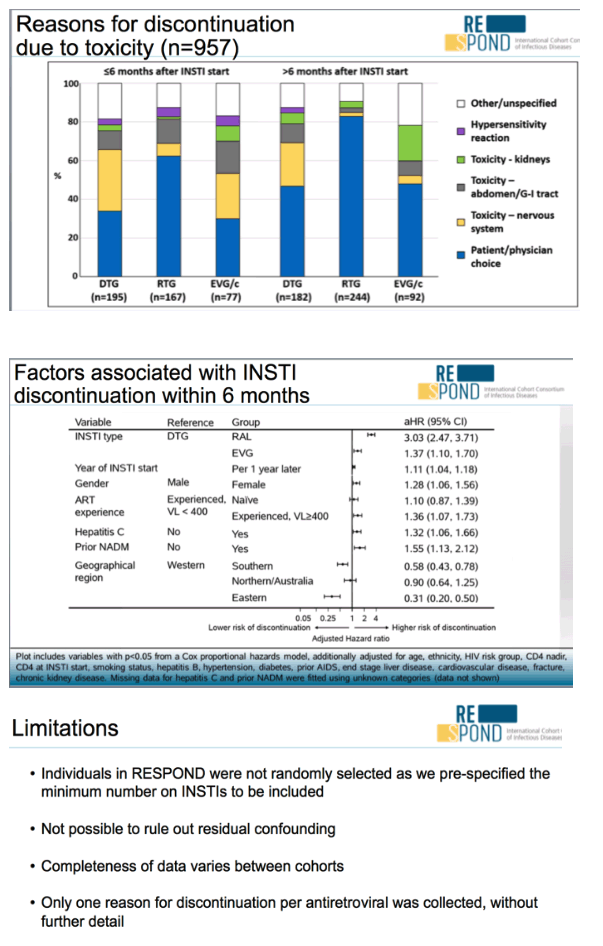

|
| |
|
 |
 |
|
|